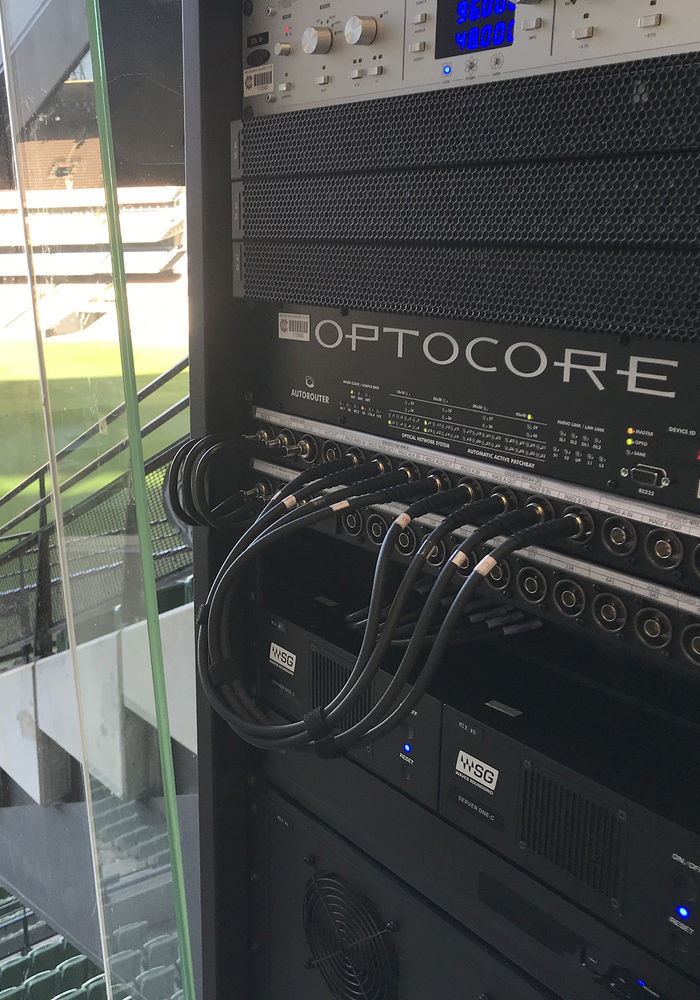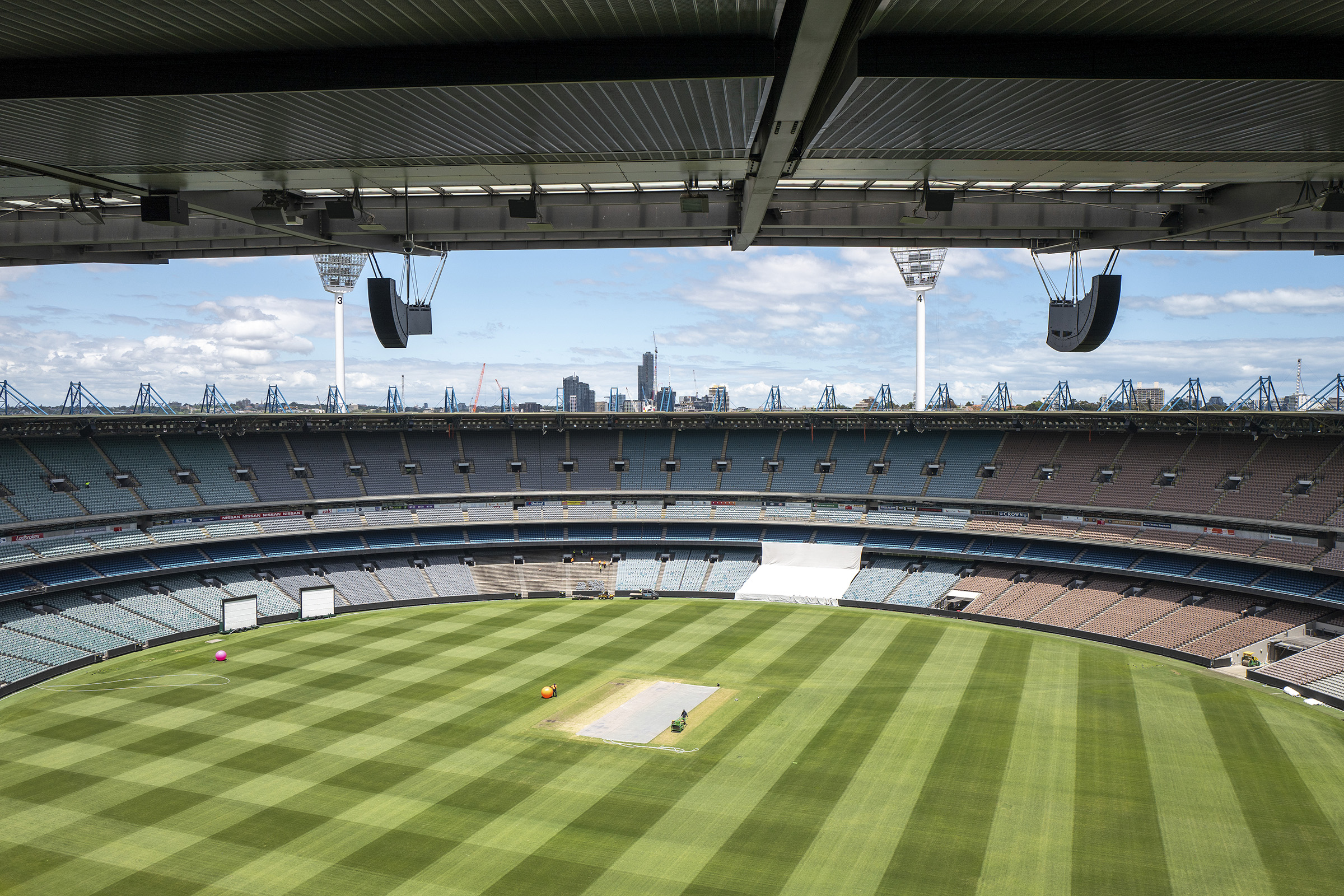Munich based Optocore has been providing fibre optic based networks for the transmission of audio, video and data for over 20 years, setting new standards in digital network technology. We discovered how the manufacturer has brought true connectivity to The Melbourne Cricket Ground following a substantial upgrade to the 100,000 seat stadium.
A major Australian cricket venue recently saw its PA system completely overhauled as part of a AUD$50m revamp, with a number of pro audio brands — including fibre network specialists Optocore — serving a vital role in the implementation. To give an idea of scale, more than 3,000 speakers now populate the seating bowl, function rooms and VIP suites, atria, internal concourse areas and exit gates.
The overall budget included an AUD$25m contract for the new site-wide PA, transport and connectivity, spearheaded by Australian sound & AV consultants Auditoria who conceived the system, and Diversified, who undertook the complex integration at the MCG.
Conversations with Auditoria began after it was decided that the 14-year-old existing PA system no longer met audience expectations. Diversified then provided the winning bid for the tender of the new design’s integration, and following a year-long project, the installation was completed in time for the first Test Match on Boxing Day 2019.
The design uses two signal transport systems — one for DiGiCo and one for Q-SYS. The mixing system for the seating bowl comprises a DiGiCo SD9 with two 4REA4 mix engines.
The local I/Os in the control room are connected to an SD Rack and the interface to the broadcast is via Optocore devices for MADI and AES-EBU connectivity, while the additional I/O is provided by Optocore X6R-FX-16AE-SRC (AES/EBU) and DD4MR-FX (MADI) interfaces.
On top of that, portable DiGiCo input frames can be deployed around the stadium for live entertainment, and in three locations are connected back to the control room via a pair of Optocore AutoRouter 5 intelligent fibre patchbays.
Auditoria co-designers Scott Willsallen and Luis Miranda designed and engineered the systems and specified all componentry and connectivity, with the latter managing the project and being joined later on by Justin Arthur for the commissioning process.


